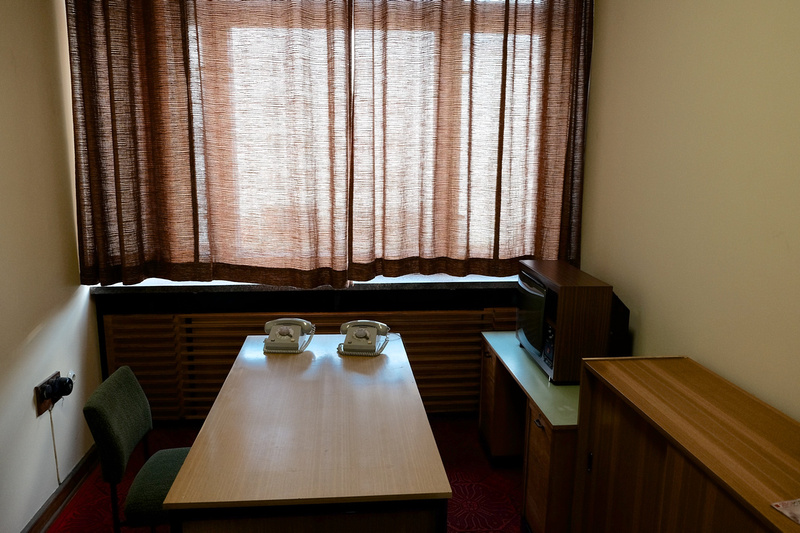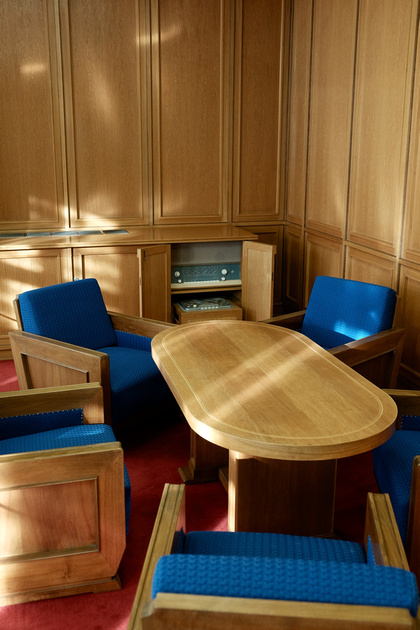


Framing Berlin: The STASI Museum
The STASI Museum
Everytime I hear and read about right wing misanthropic activity, I wonder what Neo-Nazis have missed in their lives, especially during their educational period. At the same time there is an amnesia-like run on left wing groups, especially towards the Political Party which evolved out of the former East German, also misanthropic, Socialist Party (SED - Sozialistische Einheitspartei Deutschlands). The Nazi and The SED Dictatorships can not be compared, yet they had a few things in common, the biggest common denominator was obtaining control over all subjects by means of absolute terror through all levels of society.
A recent visit to the STASI (East German Secret Police) Museum in Berlin revealed an interesting Status Quo of our country. As a citizen that has a multi-faceted view of his home or birth-country, I am eager to learn about the views and standpoints of other fellow countrymen*women of all ages. The Museum which is a sort of a Memorial at the same time, offers a good opportunity to update on this not so easy topic.
German Society is in turmoil, a constant change and work in progress is in action behind the big scenes and themes of contemporary politics. How we handle certain aspects of our history will define the perceptions and think tanks of future generations, and issues that seem to be under control presently, are most probably the seeds of future problems. Even though historians and other intellectuals are permanently working on, organizing and updating latest insights, findings, facts and documents, the general public is growing tired of a seemingly recurring theme complex.
The way to deal and learn about the wrongdoings of the past is via education, i.e. via schools. The German school curriculum is incomplete and full of gaps concerning these subjects. Our way of throwing light on the Nazi Dictatorship is insufficient, our way of examining the East German Dictatorship is non-existent. Kids leaving school nowadays don´t have a clue about what went on in our country in the past handful of decades. Not only is it sad, it is absolutely catastrophic and dangerous. Ignorance, indifference and political idiocy is already standard in most parts of German society. The lady who headed the tour through the Museum told us about a kid who visited the place with his class, and at one point asked her why the Nazis built the wall so close to the Reichstag. I suppose this says it all.
People who were raised in East Germany during the Cold War grew up with double trouble. Not only did they not deal with the Nazi past, now they don´t deal with the SED past. This could explain some of the problems we are experiencing.
Hmm, my little article sounds a bit harsh when rereading, but I guess that´s what I´ve come up with not only after the visit to the Museum, but after the last four years in Berlin, my intensive domestic experience, and after my life abroad with an outsiders view on this country. What does it amount to? The Stasi Museum is a well made and perfectly conserved Memorial place. It helps to get an insiders view of how governmental organized terror works. The manipulating power of the Stasi still lives on, the trained and mostly loyal agents are still amongst us even if they´re without masters and instructions. It`s a heritage that we have to live and deal with, alongside the Nazi heritage.


The Foyer


Felix Dzerzhinsky was the founder of the Soviet Secret Police, the Cheka, which was reorganized several
times and eventually became the KGB. Dzerzhinsky was, of course, a hero for all
Secret Police and Spy Agencies in the Communist Realm.










The desk of Erich Mielke, the head of Stasi for most of its existence. The pictures give a glimpse into
the terrible banality of a dictatorship and also highlight the petit bourgeois mentality of its leaders.












The above pictures are from Mielkes office and his personal secluded areas.
As the supreme leader of the whole shebang he was furnished and provided
with all comfort according to the socialist taste of the time.






Wardrobe and dressing room for guests.


A safe in a filing cabinet with a board for remarks concerning
career training and schedules for party work.


Socialist Art with symbols of Communism, the fight for the Right Cause and the stylized Soviet Soldier
crushing Nazi Emblems (after a statue which stands at the Soviet Memorial in Berlins Treptower Park).






Socialist/Communist vocabulary is very close to Nazi Jargon.